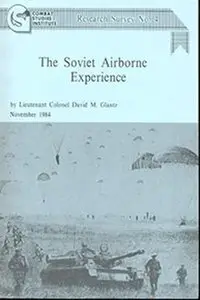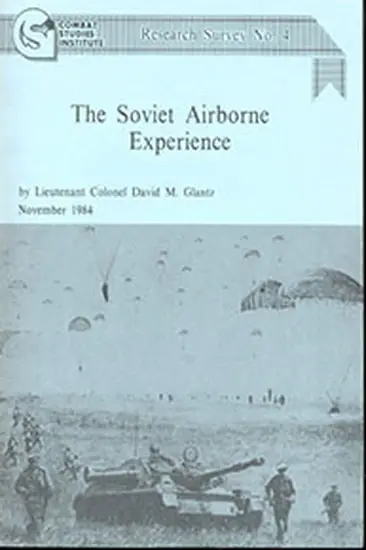The Soviet Airborne Experience By David Glantz
Publisher: U.S. Army Command and General Staff College 1984 | 232 Pages | ISBN: N/A | PDF | 22 MB
Publisher: U.S. Army Command and General Staff College 1984 | 232 Pages | ISBN: N/A | PDF | 22 MB
The genesis of Soviet airborne military doctrine occurred during the decade of the 1920s, a period characterized by intense intellectual ferment in Soviet military affairs. That ferment ultimately converged with the movement toward industrialization and the adoption of modern technology to produce, in the early 1930s, a renaissance of military thought within the Soviet Union. A generation of military leaders and thinkers, conditioned by a revolutionary philosophy and participation in the Russian Civil War and Allied intervention and eager to elevate the Soviet Union into a competitive military position with the rest of Europe, gave shape and focus to that renaissance. They were imaginative men, infused with ideological zeal, encouraged by their political leaders to experiment, and willing to learn from the experiences of military leaders abroad. Their efforts produced a sophisticated military doctrine, advanced for its time, and an elaborate, if not unique, military force structure to implement that doctrine. It is one of the major ironies of history that the work of these men--the Tukhachevskys, the Triandafilovs, the Issersons, and a host of others--would be eclipsed and almost forgotten. Their efforts for the Soviet Union earned for them only sudden death in the brutal purges of the late 1930s. The formidable armed force they had built and the sophisticated thought that had governed use of that force decayed. The brain of the army dulled, and imagination and initiative failed. The military embarrassments of 1939-40 and the debacle of 1941 blinded the world to the true accomplishments of Soviet military science in the 1930s, and an appreciation of those accomplishments never really returned. The military leaders of 1943-45 resurrected the concepts of their illustrious predecessors and competently employed them to achieve victory over Europe's most vaunted military machine. Yet the memories of the Soviets' poor performance in 1941 never faded and have since colored Western attitudes toward Soviet military art. Thus, it is appropriate to recall the realities of Soviet military development unblemished by the images of 1941.



